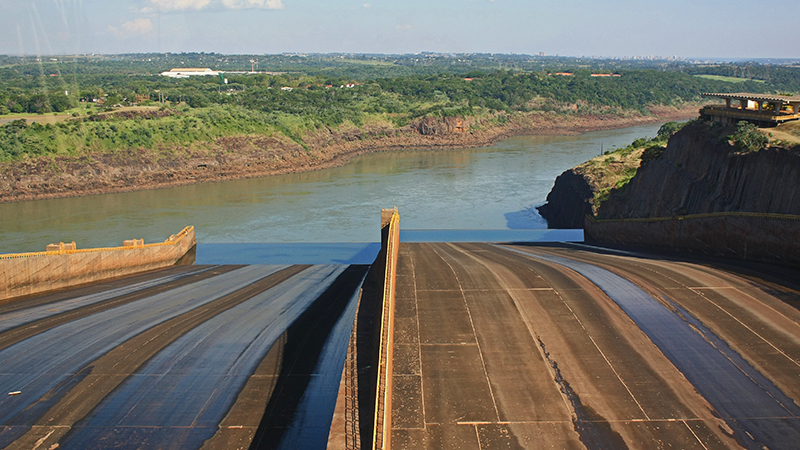With almost US$100tn in assets, global debt capital markets are among the largest and deepest financial markets in the world, providing investors with fixed-income investment opportunities that allow them to preserve and increase their financial capital at a relatively low risk.
They could also play a paramount role in financing sustainable development. The challenge is to figure out ways in which we can tap into this pool to raise the financial capital we need to create a sustainable economy for the only planet we have; where natural capital is preserved, restored and enhanced rather than destroyed.
There are some bonds that bear a ‘green promise’ – ‘green bonds’– which are fixed-income securities that raise capital for a company or project with specific environmental benefits in mind.
Green bonds are attractively simple structures, offering investors additional disclosure and accountability and providing a means to ring-fence funds for investments in sustainable agriculture, energy-efficient buildings, clean energy, industry and transportation, water and waste, even biodiversity conservation, to name just a few investment fields.
Weekly briefing: Sign up for your essential climate politics update
Creating a large, liquid market in green bonds – including aggregating small projects – offers a unique opportunity to boost the volume of capital available as well as reduce the cost of debt for projects that drive the transition towards a sustainable economy.
Moreover, the discussion around green standards has a chance to influence the wider market as investors and issuers pay more attention to environmental, social and governance issues.
As we seek proactive solutions to the environmental challenges we face, green bonds and their associated standards can play an important role for both the finance and conservation communities.
Report: Wind company raises $300m in first Chinese green bond
But not everything that is labelled as ‘green’ actually fulfils this promise. Several issuances in the last two years have been highly controversial.
There is a risk of ‘greenwashing’, a charge levied by some NGOs against a €2.5 billion bond issued by Engie (formerly GDF Suez) in May 2014 (see BankTrack letter below).
NGO letter to Green Bond Principles
This is why WWF believes that robust, credible, fully developed and widely accepted industry standards for green bonds are urgently needed.
Only a bond for which the issuer can demonstrate measurable environmental benefits, certified by an independent party according to such standards, should qualify as a green bond. Bonds which do not meet these standards could undermine the credibility of the entire green bond market.
WWF recognises that increased transparency represents an additional effort for the issuer but we believe that this is a ‘cost’ well worth incurring for the benefit of reduced risk. In a fully functioning market, such added value will be reflected in premiums and prices.
Report: Green Climate Fund partners condemned for fossil fuel funding
Global private sector sustainability standards and certification systems have been developed in many sectors (eg FSC for forestry; MSC for fisheries) and are now reaching maturity.
We believe that the same can be done for the bond market, drawing on existing standards while taking into account scientific evidence. Research we have commissioned shows it is possible.
One of the critical success factors will be greater transparency, in particular stricter requirements and better sector-specific methodological guidance on voluntary disclosure of environmental information to the public.
Better information is needed to allow investors to take a view. Issuers should be required to provide data annually and at maturity of the bond to demonstrate the environmental impact of its underlying assets over its entire lifetime, as well as an analysis of budgeted vs. actual environmental benefits according to the appropriate key-performance metrics.
Collective action is needed to develop such standards, building on existing initiatives such as the Green Bond Principles and the Climate Bonds Initiative.
Report: Bloomberg climate taskforce to target financial filings
The time is ripe for change: Mark Carney’s call to “break the tragedy of the horizon” clearly shows that climate change has become a defining issue for financial stability, due to physical risk, liability risk and transition risk.
Green bonds, if designed properly, could help address these risks: they can channel investment into ecologically sound infrastructure to mitigate physical risks. Their use-of-proceeds provides information about the underlying assets to help investors assess climate-related business or liability risks.
Green bonds can also finance the transition towards a lower-carbon economy: long-term investments can also help investors mitigate policy, technology and physical risks, which could prompt a reassessment of the value of a large range of assets as costs and opportunities become apparent.
Green bonds can help break the tragedy of the horizon by connecting present and future generations. This is also WWF’s mission and imperative: to build a future where people live in harmony with nature.
Pascal Canfin is head of WWF France
